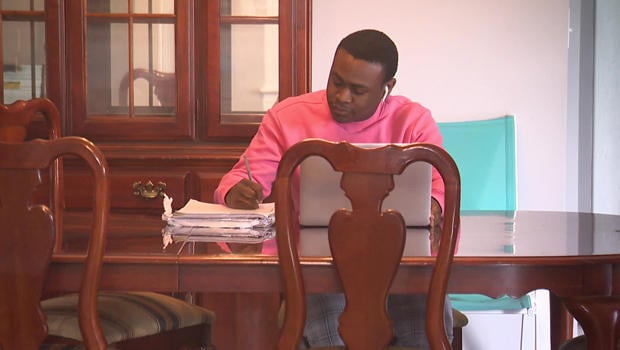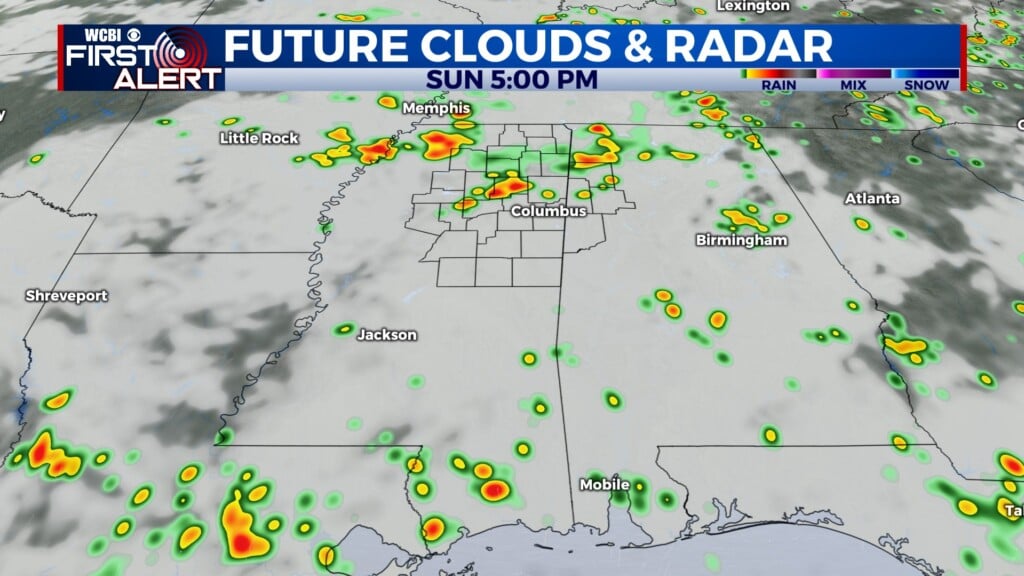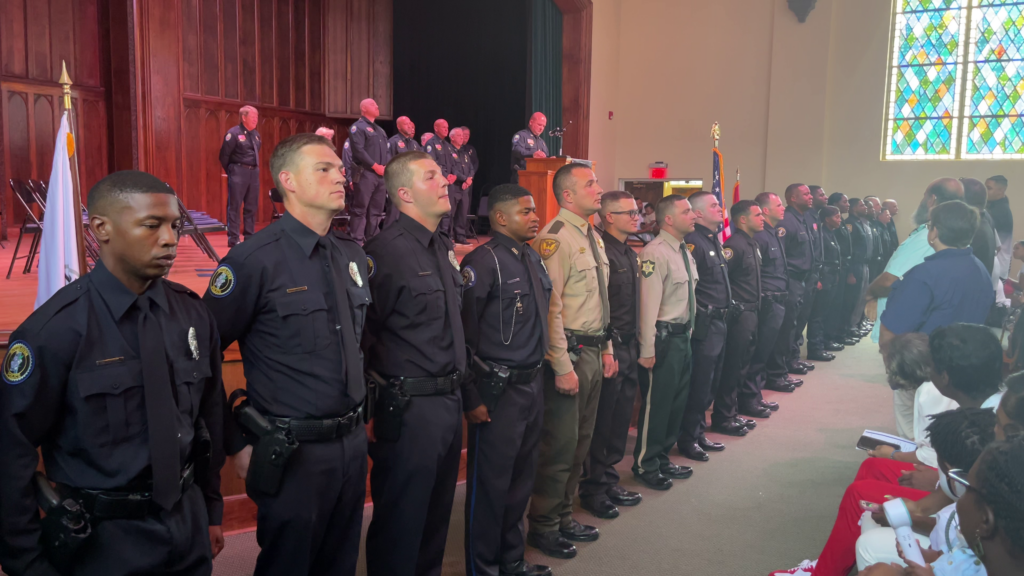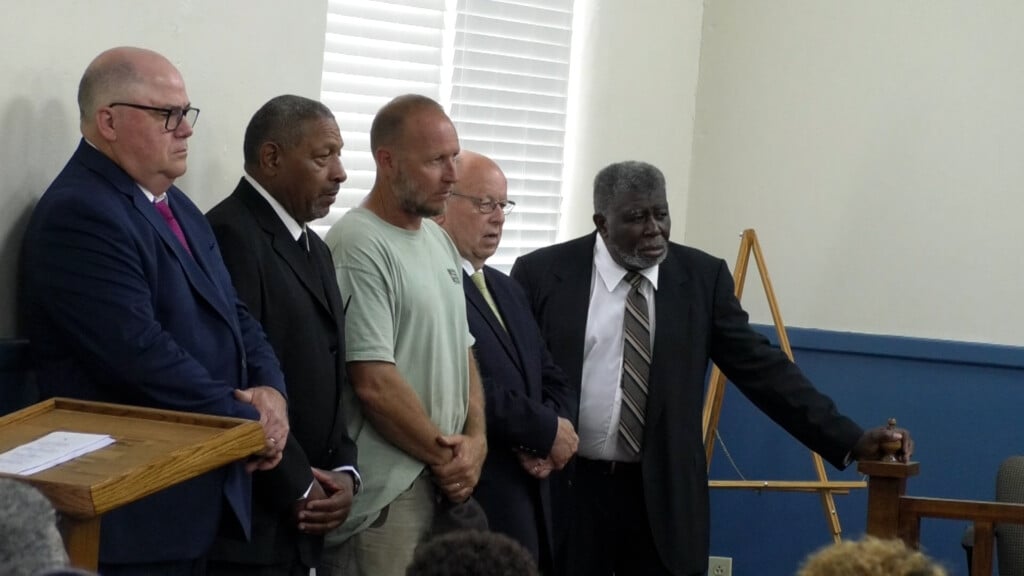Challenges abound for students forced to take classes remotely
Seventeen-year-old Joshua Lynn thought he had his life all mapped out. A junior in a Baltimore public high school, he was on the road to a top college and a career as a lawyer. He told correspondent Erin Moriarty, “I was gonna go to law school and, you know, pass the bar, you know, and be like you, Miss Erin! I had all that planned out.”
And then in March, without much warning, schools throughout the country shut their doors. “No one truly had a plan in place for students to succeed, or continue that learning at all,” Lynn said.
He, and students throughout the country, including those in college, were suddenly forced to go home and learn remotely, either through online classes, paper packets, or lessons on TV.
“It’s hard to understate how big a deal it is,” said Doug Harris, a professor at Tulane University in New Orleans, who is studying the impact of the coronavirus on schools. “You have 75 million students who are not in school, which has never happened, you know, not at least in the past century.”
The pandemic has broadened the inequities that already exist between students. With so many now at home without computers or internet service, educators fear as many as a quarter of them are not engaged in school at all.
And how well is it going for those who are? “Every student going into every grade level has missed out on instruction. No matter how hard we’re trying, no matter how hard we try, it’s just not the same,” said Jessica Rutherford, a teacher and reading specialist in Vero Beach, Florida. She works mainly with third- through fifth-graders who struggle with reading, in a school where most students live below the poverty line.
Moriarty asked, “You have 30 students. About how many would you say are doing pretty well under this, and how many are not?”
“I would say it’s about 50 percent” who are not, she replied. And that may be because to many students, she is now just a voice over the phone. “They don’t have someone there, you know, sitting side-by-side with them, coaching them through a lesson or helping them when they get stuck,” said Rutherford. “And so, it is heartbreaking because you just have to stop and wonder. ‘Okay, now when do we make up this time?'”
Her work days feel longer, because they are; there are meetings with parents and with other teachers, all while she’s home taking care of her own two children, including a five-year-old son trying to learn remotely as well.
“There are days where I’m just, like, okay, what else?” she said. “Like, something has to give, because this is just pure craziness, the expectation.”
Rutherford said that teachers are giving it everything they’ve got, “but you just still feel like you fall short.”
Falling short, while children fall behind; that’s what also worries Kimberly Dukes, a parent who lives in Atlanta. Georgia.
“The primary years and early years are the most critical,” she told Moriarty.
Dukes’ children range in age from three years old to a senior in high school, but she worries the most about a middle child: “My elementary kids were sent home with packets of work,” she told Moriarty. “But what I noticed was the work wasn’t for each individual student. So, my baby who is in the fifth grade is reading on the first grade level. This work is not going to help him. And it actually broke me down. And I was crying, because I actually see how my children are hurting. The inequities are much more, bigger than ever before.”
Yet, the greatest pressures may weigh on the students themselves, like Joshua Lynn in Baltimore: “We’ve been always told that colleges look at your junior year. ‘Make sure your grades are on point for that junior year because that’s all they’re going to be looking at.’ You can’t expect students to properly succeed in those environments that catastrophically change in a matter of days.”
As he has always done, Lynn juggles his job at a fast food restaurant, while taking seven rigorous classes, all now online, which means less help from teachers. “I don’t think that I am doing my best that I can,” he said. “I’m a student that values feedback.”
He often works late into the night and early morning, when uncertainty looms large. “It definitely has got me thinking, what’s next?” he said. “What is going to be put in place by the people in charge?”
There are no clear answers, because even educators don’t know if schools will return to normal in the fall. Doug Harris said, “There may have to be adaptations in the schooling environment: possibly, you know, running shifts of students – a morning shift and an afternoon shift.”
And even then, Harris said, it will take time for some students to recover what they lost, as it did in New Orleans in 2005 after Hurricane Katrina forced schools to close.
“It was about two years on average,” he said. “That last word, on average, is important though. Different students are experiencing this very differently. Students who are in the best situations are those who can do what we’re doing now [online] – they have a computer, and they have an internet connection, and they have a quiet room. They don’t have obligations. They’re not taking care of their younger siblings while their parents are at work or sick.”
But remote learning has made one thing very clear, as noted by Hollywood writer Shonda Rhimes in a viral twitter post:
Few people will ever take teachers for granted again.
“Oh, I one hundred percent believe that,” said Rutherford. “There’s nothing quite like the connections we have at school.”
Joshua Lynn can’t wait to get back to the classroom: “I definitely think that this has actually motivated me to go even harder and to strive more, and to become the person I want to become, and even more.”
For more info:
Story produced by Sari Aviv. Editor: Carol Ross.






Leave a Reply